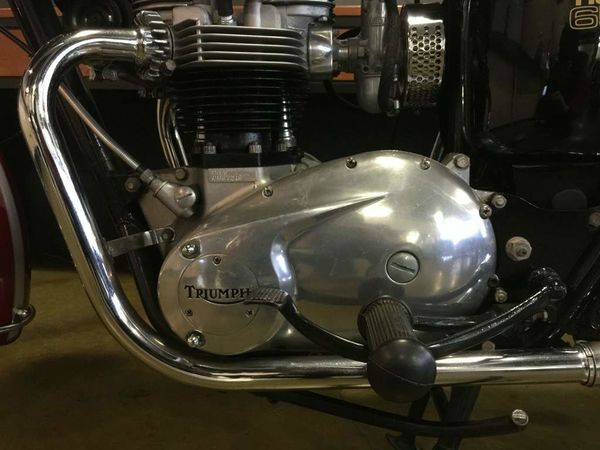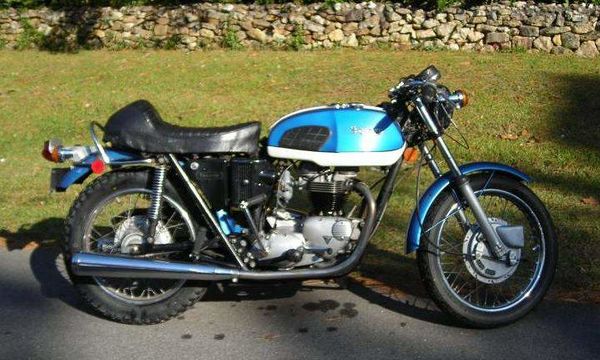Triumph Tiger 650 TR6R: history, specs, pictures
| Manufacturer | Triumph |
|---|---|
| Production | 1972 |
| Class | Classic |
| Engine | Air cooled, four stroke, parallel twin cylinder, OHV |
| Bore / Stroke | 75.9mm x 75.9mm |
| Compression ratio | 8.6:1 |
| Horse Power | 41.97 HP (31.3 KW) @ 6500RPM |
| Torque | 36.88 ft/lbs (50.0 Nm) @ 5500RPM |
| Fuel system | Carburetors |
| Transmission | Gear box: 4-Speed Final Drive: Chain |
| Suspension | Front: Telescopic forks Rear: Swingarm, dual shocks, hydraulically damped |
| Brakes | Front: Drum Rear: Drum |
| Front Tire | 3.25-19 K70 |
| Rear Tire | 4.00-18 K70 |
| Wheelbase | 55.91 inches (1420 mm) |
| Dimensions | L 87.4 inches (2220 mm) W 29.02 inches (737 mm) |
| Seat height | 31.1 inches (790 mm) |
| Weight | (dry), 189.0 kg (wet) |
| Manuals | Service Manual |
| Tech Specs · Brochures · Reviews · Ads · Videos | |
The Triumph Tiger 650 TR6R was a Air cooled, four stroke, parallel twin cylinder, OHV Classic motorcycle produced by Triumph in 1972. Max torque was 36.88 ft/lbs (50.0 Nm) @ 5500 RPM. Claimed horsepower was 41.97 HP (31.3 KW) @ 6500 RPM.
Engine
A 75.9mm bore x 75.9mm stroke result in a displacement of just 649.0 cubic centimeters.
Drive
The bike has a 4-Speed transmission. Power was moderated via the Wet multi-plate.
Chassis
It came with a 3.25-19 K70 front tire and a 4.00-18 K70 rear tire. Stopping was achieved via Drum in the front and a Drum in the rear. The front suspension was a Telescopic forks while the rear was equipped with a Swingarm, dual shocks, hydraulically damped. The wheelbase was 55.91 inches (1420 mm) long.
1972 - 1981 Triumph Tiger 650 TR6R
The Tiger was almost identical to the Bonneville and claimed to have performance to spare, with tractability and smooth running. The 650 TR6R proved to be only slightly slower at the top end than the Bonneville and its single Amal carburetor needed less fettling, but it still boasted gusty grunt at low revs and better fuel economy.

